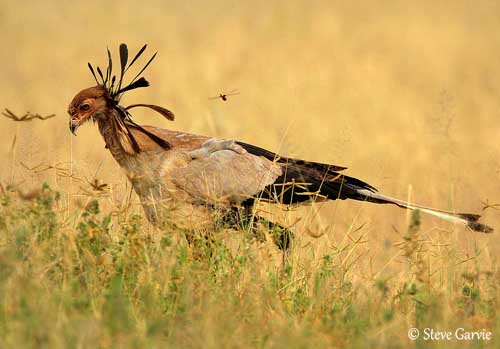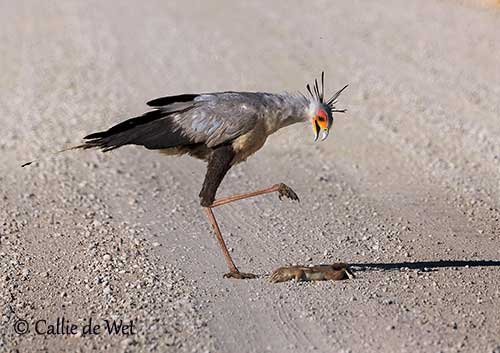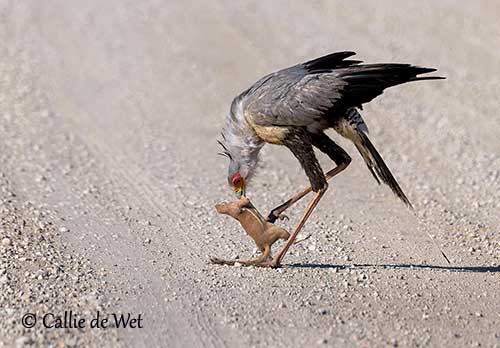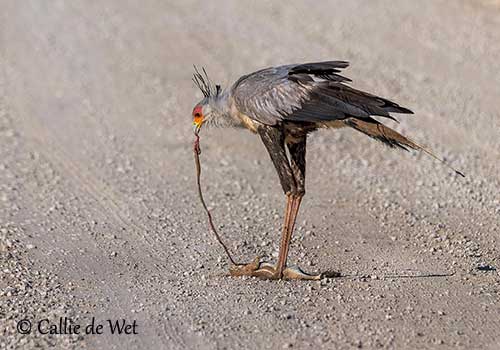
Secretarybird
Sagittarius serpentarius
Accipitriforme Order – Sagittariidae Family
BIOMETRICS:
Length: 110-130 cm ; Winspan: 200-220 cm ; Weight: 3100-4100 g
LONGEVITY: 18 years
DESCRIPTION:
Secretarybird is a very large bird of prey. Its plumage is mostly grey, with black primaries, thighs, and a beautiful black crest of about twenty long feathers.
Tail is grey, barred by two broad black stripes, conspicuous when the bird is flying. Tail presents two central feathers, longer than the others.
The top of its very long legs is feathered with black. The lower leg is bare and pinkish-grey, covered with scales to protect them while it is walking or when it attacks some snake.
Toes are short, but very strong, with a powerful talon at the rear.

Bill is short, strong, hocked and pale grey. Secretarybird has a patch of bare facial skin, which extends behind and above eyes, orange-red in colour. Eyes are dark-brown, with very long black eyelashes.
Both sexes are similar, with male slightly larger than female.
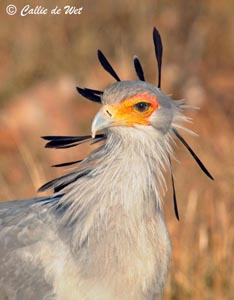
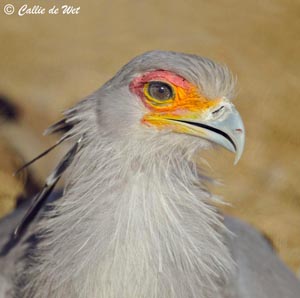
VOICE: SOUNDS BY XENO-CANTO
Secretarybird is a silent bird. But when it is displaying, it utters a hoarse croaking sound, very deep and rapid. It may also make a kind of mewing noise during the night, on the roost-site.
HABITAT:
Secretarybird lives in open grass plains and steppes, also in savannahs with scarce bushes and open spaces between trees.
RANGE:
Secretarybird lives in Africa, South of Sahara.
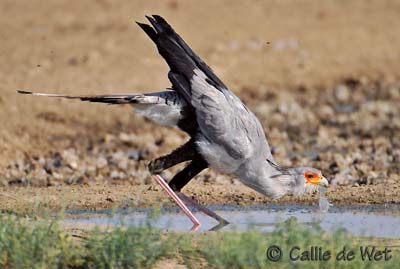
During the breeding season, Secretarybirds perform flight displays. Several males perform acrobatic flights, climbing high into the sky, and suddenly dropping down. They soar in wide circles high above the ground, with conspicuous long legs and tail projected behind, and uttering strange groaning. They also execute undulating swoops, downward dives, and both clasp each other talons, like eagles.
Secretarybird prefers to walk into its range, searching for food. It strides majestically across areas. It can fly very well, but rarely does so, because it hunts on the ground. It is able to walk up to 20 miles in a day.
After young fledging, pair continues to roost in the nest at night, and they defend from this nest their territory, about 50 km2 around the nest site.
FLIGHT:
Secretarybird is a very good flier. It uses thermal currents to ascend and it soars for long distances. When it is threatened, the bird runs with spread wings, but it will take off and fly strongly if necessary. It may rise on thermals up to nearly 4000 metres elevation.
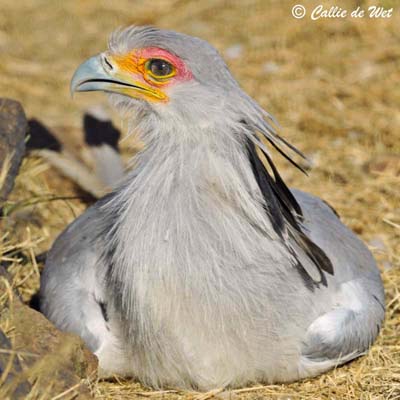
Ang : Secretarybird
All : Sekretär
Ital : Serpentario
Nd : Secretarisvogel
Russe : Птица-секретарь
Photographers:
Callie de Wet
GALLERY
Steve Garvie
RAINBIRDER Photo galleries
Texte de Nicole Bouglouan
Sources:
HANDBOOK OF THE BIRDS OF THE WORLD Vol 2 by Josep del Hoyo-Andrew Elliot-Jordi Sargatal - Lynx Edicions - ISBN: 8487334156
L’ENCYCLOPEDIE MONDIALE DES OISEAUX - Dr Christopher M. Perrins - BORDAS - ISBN: 2040185607
BIRDS OF PREY OF AFRICA AND ITS ISLANDS by Alan and Meg Kemp - Struik Publishers - ISBN: 1770073698
Wikipedia (Wikipedia, The Free Encyclopedia)
Animal Diversity Web (University of Michigan Museum of Zoology)
The Hawk Conservancy Trust (Hilary Smith)
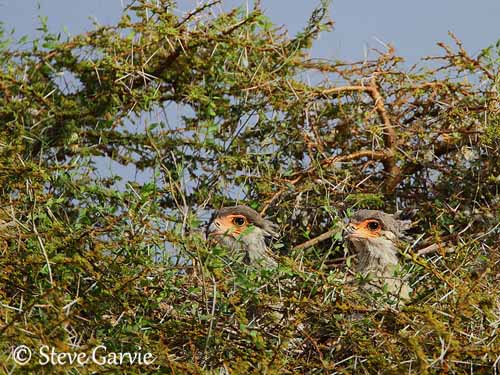
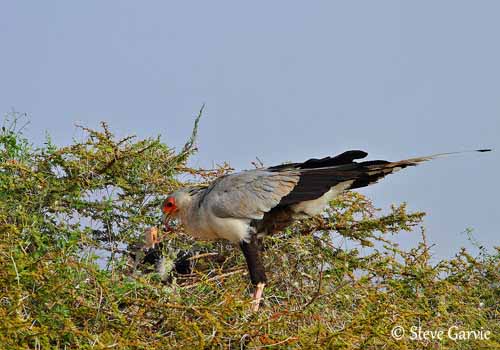
DIET:
Secretarybird feeds mainly on insects (grasshoppers), lizards, small birds and eggs, young hares, rodents, small amphibians and snakes.
PROTECTION / THREATS / STATUS:
Secretarybird is officially protected because it kills poisonous snakes, but decline of this species continues, and they don’t breed successfully in captivity.
